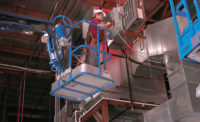Plan
An effective safety and health program begins with establishing written safety plans. These plans are evidence that management is proactive about safety and compliance, but they are not necessarily evidence that the program is in compliance. Therefore, it’s important that plans effectively describe compliance issues, safety procedures, and associated responsibilities.
More often than not, plans don’t include the necessary elements to successfully define and direct a company’s safety efforts. This is due, in part, to the use of safety plans widely available from government agencies, universities, trade associations, etc. While these plans offer an excellent springboard to help get a company started, they are often too generic to effectively address a company’s safety issues.
Companies should customize these types of plans to address the following:
Audience – Direct the substance and content to the individual(s) who will need to work with or from the plans. The more closely related to the actual conditions employees will encounter on the job, the more useful the plan will be.
Flexibility – Leave room for discretion. For instance, if a plan on inspections includes a detailed checklist, it may create the impression that the company will only follow that checklist. This can prevent the flexibility necessary to ensure a thorough inspection is conducted when other safety issues or concerns arise during a walkthrough.
Compliance – A careful review of regulations and industry guidance is necessary to ensure compliance and that the plan is up-to-date. For example, several states have their own safety and health requirements that may change more often than federal requirements.
Company-specific rules – Unless you write down rules about how certain tasks are performed or why certain activities are prohibited, there may not be any consistency to enforcement — or any enforcement at all.
Train
Training is one of the most important elements in safety and health management. While many standards contain specific training requirements, others make it the employer’s responsibility to determine what training may be necessary.
When training is needed, avoid long lectures or endless presentations by using a variety of training methods, including: PowerPoint presentations; videos; online training; print materials that include tests, quizzes, and exercises; and computer-based simulations.
These can be developed in-house, but many can be found readily through a variety of vendors in a range of prices. Purchasing these materials can save employers both time and money because costs associated with development and production can often be thousands of dollars. Also, they afford employees a respite from the doldrums of typical classroom training. This can lead to better engagement and retention. However, employers should supplement any off-the-shelf training materials with information and demonstrations that cover company-specific safety procedures.
Inspect
Inspections are designed (and often required) to identify unknown or missed hazards and provide assurance that safety controls remain in place.
The typical inspection consists of a walkthrough of an area, often using a checklist to ensure that important items are not overlooked. Like written plans, employers often rely on checklists developed by outside sources.
Again, these are excellent tools to begin the inspection process, but employers should develop company-specific checklists by considering:
- Past problems
- Standards that apply to your industry;
- Specific standards of concern to the company;
- Specific equipment in the workplace;
- Input from employees;
- Company safety practices
- Training completed by employees; and
- Work from job procedures and job safety analyses.
Consult ANSI and NFPA standards as these sources are often considered authoritative on a particular safety topic and provide detailed information not otherwise found in OSHA regulations or other guidance. In addition, equipment manufacturers’ instructions often address inspection needs.
Employers can also hire consultants to conduct inspections of their facility. However, the above elements are best understood by those intimately familiar with the operations and safety procedures of the company.
The effort to manage a safety and health program takes time and resources. Choose the right resources and carefully assess each to ensure written plans are thorough, training is effective and inspections are comprehensive.




